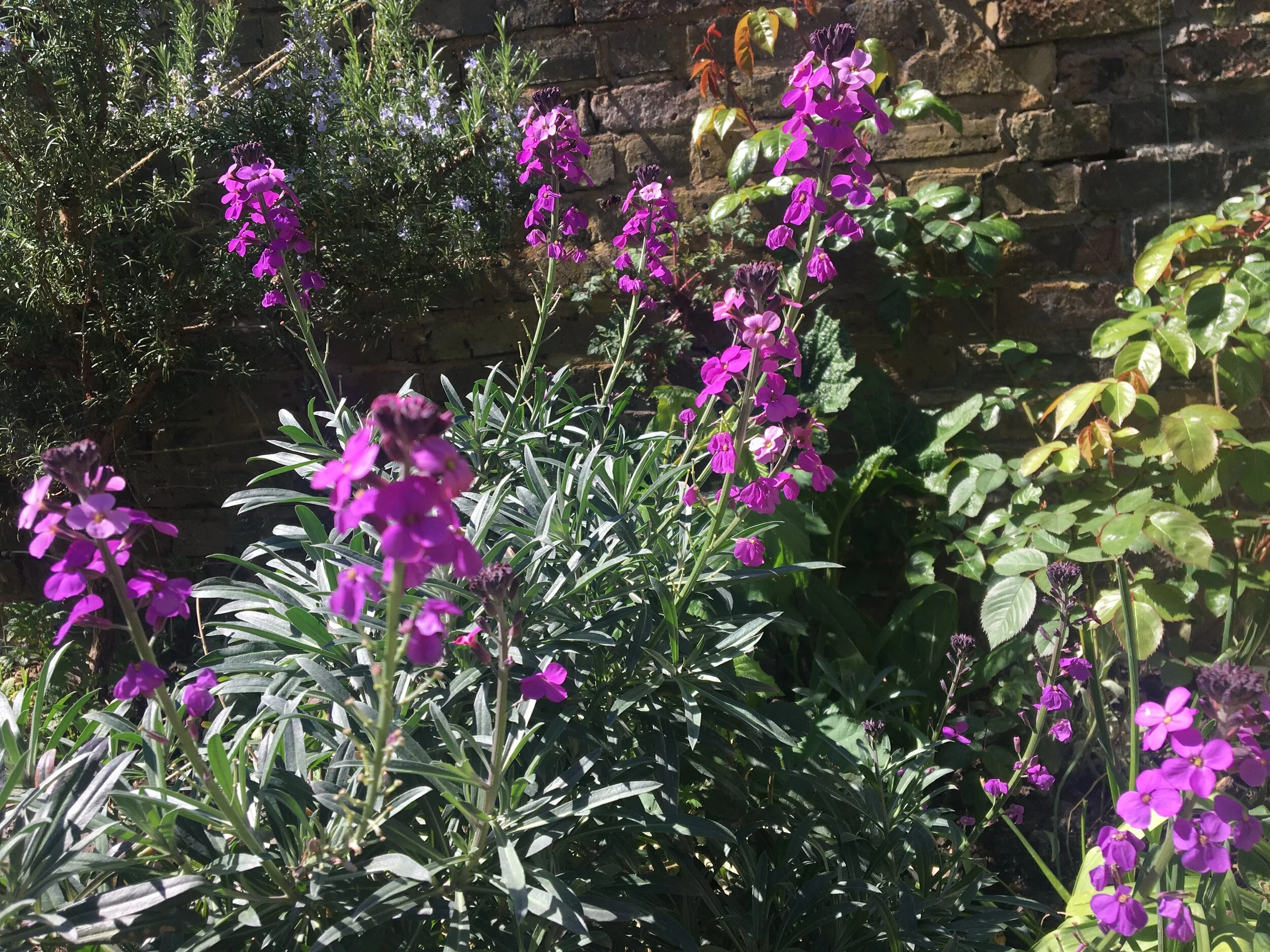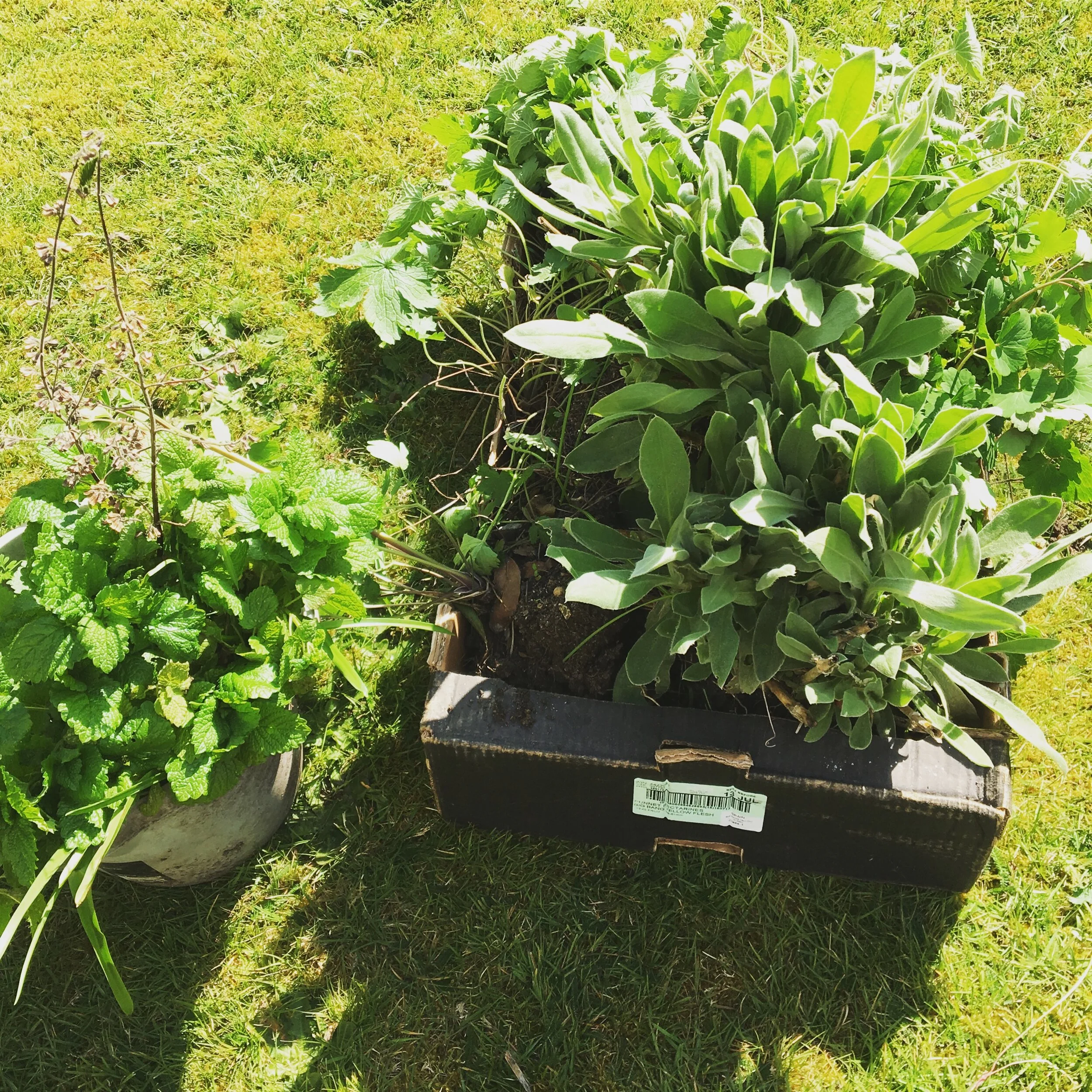Beginner gardeners - choosing the right plant
I’m always surprised by the language friends who are new to gardening use to describe their efforts: ‘I’m a useless gardener’, ‘I just kill everything’ and ‘whatever I touch dies’. Seed bearing plants got into their stride around 240 million years ago and there is little doubt that they will still be here in some form long after we are gone. I sometimes wonder if the anxiety in my generation over ‘always killing plants’ is party borne from our current awareness of human impact on the environment and the loss of precious ecosystems and habitats. Mankind certainly has the terrifying power to wipe out whole plant species, but take heart beginner gardeners, this does not mean you are doomed to do the same in your own garden. Plants are, in general, tough and determined to grow. They emerge from cracks in walls and paving and, speaking from personal experience, will often surprise us by surviving periods of sustained abuse or neglect (not that I advocate this approach at all). Plants become sullen and disobedient when we plonk them in completely the wrong growing conditions, like setting someone off for a jolly walk in Northern Scotland wearing shorts and a teeshirt: we cheer them on, offer encouragement, food and water, and then wonder why they’re not jumping for joy. If you’re spending a fortune on plants each year and then watching as they struggle and give up the ghost, you’re not killing them, you’re just choosing the wrong plants. Taking 10 minutes to plan ahead will transform your efforts.
There are a few early gardening experiences which I think start young people off assuming they’re cursed. The first is growing houseplants which for many is the only available experience of gardening before we are lucky enough to have a garden. Houseplants are brilliant, but caring for them involves responsibility for all factors in their environment, and tricking them into thinking they are in a humid rainforest, their roots entangled half way up a tree, rather than in a bowl on top of your telly is no mean feat. For many it proves a disheartening entry into horticulture
People also seem to love buying lavender, and the internet is littered with beginner gardening tutorials for planting up a herb basket with thyme, sage and oregano. I can see the instant appeal of growing your own herbs, but beyond that I think it’s a slightly irresponsible first project to set inexperienced and enthusiastic gardeners as each spring my friends wonder why their previously verdant efforts are now a pile of dry twigs. I personally wouldn’t classify lavender as an entry-level plant. Mediterranean herbs evolved to live in dry and sunny climates and any shade, or sitting in wet compost over winter will be the end of them. Lavender plonked in a shady spot in heavy soil with die over winter, as will thyme which doesn’t live for very long anyway.
So long as beginner gardeners choose easy, tried-and-tested plants, the worst-case scenarios of mistreatment really aren’t so bad. Plants will get a bit leggy if they aren’t cut back, or will overtake the garden, or inversely will flower less prolifically than those in the magazines, but beyond that, they should be fine.
The first thing to think about before going to a garden centre is what sort of garden you have and what plants are appropriate. If the thought of buying a soil pH test is likely to put you off I wouldn’t worry for now. Have a look at what is growing nearby and take inspiration from that. What really is worth noting is what parts of the garden are in sun or shade, and the easiest way to do that is to pick a lazy day at home and look out of the window (and maybe take a photo) every hour. Plants that ask for ‘Full Sun’ need at least 6 hours a day of direct sunlight (not filtered through tree branches). Those requiring ‘Partial Shade’ will be happy with less, and particularly happy to have full sun in the morning and shade in the afternoon. And finally, look at whether your soil is very wet or competing with tree roots. The end of my garden is dominated by a walnut tree so qualifies as (very) ‘Dry Shade’. If there is a lot of moss growing on your soil, it is probably quite heavy and damp.
Garden centres bring plants into flower in a heated environment ahead of time and unsuspecting beginners are lured in by what looks dramatic, only to find the flowers die after a week in the garden and the plant follows shortly afterwards. Buying things that aren’t in flower yet will give plants a chance to settle in and it’s a good idea to have a list of appropriate plants that you like before you shop, to help you resist the lure of plants in full bloom. A quick search online will definitely yield helpful results, especially if you preface your search with ‘easy’ or ‘low maintenance’ (e.g. ‘easy perennials for shade’) and on the RHS plant finder you can enter the details of what you are looking for and then check the suggestions are suitable. When buying plants online, there is normally quite a lot of helpful information given about what the plants need. If you are in a garden centre, check the labels and have your phone at hand as the RHS website will give you a quick reference for what conditions a plant needs.
All this said, don’t overthink it. In practice, most herbaceous perennials will tolerate a range of pH (Acid or Alkali) so just check on the label as you buy that you aren’t choosing anything with very specific requirements. Also, many perennials will state ‘Full Sun or Part Shade’ meaning you don’t need to worry so much about where you place them as long as they get some sun. Finally, crucially check for any mention of drainage. For ease, try to buy plants that suit your soil type - plants needing damp soil with crisp and sulk in drought, plants needing drainage will often just die in a wet winter on boggy ground. There are a few ways you can bodge it - if you’re on damp soil and love drought tolerant plants find a raised part of the garden, create a raised bed, stick to containers or, at a push, pick up a bag of horticultural grit and add a bit to the soil at the bottom of the hole. Plants needing ‘Moist but well drained’ should be fine in most garden soil unless your garden is very damp or very dry.
As a starting point, the plants below are all happy in full sun or part shade and in ‘moist but well drained soil’ of any pH.
Geranium ‘Rozanne’
Hardy geraniums – In particular ‘Rozanne’ is a classic and will form a lovely big bush of colour and spread itself between plants. Remove spent flowers to keep it flowering all summer and autumn.
Rudbeckia fulgida – Happy in sun or shade, flowers with bright yellow daisy flowers for a long time and looks after itself pretty well. Just cut back the dead stems in autumn or spring.
Rudbeckia fulgida
Anemone x hybrida ‘Honorine Jobert’
Anemone x hybrida – eg ‘Honorine Jobert’. These grow to 1m tall, flower in the late summer and autumn and tend to spread themselves locally to form healthy clumps. They do come with a warning that they are almost impossible to dig out once planted so make sure you want them before you commit.
Erysimum ‘Bowles’s mauve’ – This has flowered 12 months of the year in our garden for 3 years now. It’s short lived so will probably need replacing (from cuttings) soon but has needed no maintenance other than cutting off dead flowers and must be the hardest working plant in our garden.
Erysimum ‘Bowles’s Mauve’
Achillea ptarmica
Achillea ptarmica and millefolium – I add this to the list with some trepidation because it can be a bit invasive and spread itself. But if you are looking for low maintenance plants to fill the garden quite quickly, this has to be a good choice. Achillea millefolium offers flat plates of flowers in a big range of colours while ptarmica looks very different with little pompoms of white flowers. Both flower for a long period and just need cutting back in winter.
Achillea millefolium
To these 5 I would like to add dahlias. They don’t quite fall into the same category of fuss free, tolerant plants as they prefer full sun and require potting up (they arrive as a tuber) and a bit of care over winter (either cutting back if you are in the south of the UK and have relatively well drained soil or to be safe, lifting and storing in dry compost over winter). But for a beginner gardener I think they offer a very satisfying way to fill the garden with fairly guaranteed results and there are a huge variety of colours and forms available.
Buying plants can be pretty expensive and I’ll get into ways to save money and what you can grow from seed later, but if you choose a selection of non-fussy perennials at varying heights, ideally in groups of 3 or 5, you should have the makings of a successful garden and can gradually fill the gaps with seeds and bulbs as you go. There are so many plants to choose from and over time trial and error reveals which plants work in your garden and which don’t, but some plants are a much surer bet than others, and they will thrive and romp away with very little need for assistance.








